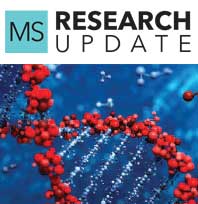Gilenya® (fingolimod)

In this Update
FDA-Approved Medications: Recently Approved
FDA-Approved Medications: New Data on Previously Approved Medications: Oral Medications
Company: Novartis
- Starting dose: 0.5 mg once daily for patients weighing more than 88.2 lbs (40 kg); 0.25 once daily for patients weighing 88.2 lbs (40 kg) or less
- Approved in 2010; indicated for clinically isolated syndrome (CIS), relapsing multiple sclerosis (RMS), and active secondary-progressive multiple sclerosis (SPMS) in patients aged 10 years and older
Previous: Aubagio® (teriflunomide) | Next: Rebif® (interferon beta-1a)
Gilenya® (fingolimod) was the first sphingosine 1-phosphate (S1P)-receptor modulator approved for the treatment of MS. In 2018, the FDA expanded the approved uses of Gilenya to include treatment of children ages 10 years and older with relapsing forms of MS, clinically isolated syndrome, and active secondary-progressive MS. Gilenya is similar in structure to a naturally occurring component of cell-surface receptors on white blood cells. (White blood cells are produced by the immune system to fight infection and disease.) Gilenya blocks potentially damaging T cells from leaving lymph nodes, lowering their number in the blood and tissues. It may reduce damage to the central nervous system (CNS) and enhance the repair of damaged nerves within the brain and spinal cord.51
A study comparing Gilenya with an interferon-based medication in pediatric patients found that Gilenya was more effective in slowing disease progression in children and adolescents with MS.
The study assigned 215 children and adolescents ages 10 to 18 years to receive either Gilenya at 0.25 or 0.5 daily depending on body weight, or interferon beta at 30 mcg per week. Magnetic resonance imaging (MRI) scans were taken every six months for two years or until treatment was stopped.
After two years, the children receiving Gilenya had a 66% lower annualized rate of formation of gadolinium-enhancing T1 lesions, compared with the interferon group. Annualized rates of new or enlarging T2 lesions were 52.6% lower in the Gilenya group, and rates of T1 hypointense and combined unique active lesions were 62.8% and 60.7% lower, respectively, with Gilenya than with interferon. T2 and gadolinium-enhancing T1 lesion volumes also were lower among youths receiving Gilenya. Of note, approximately 77% of children treated with Gilenya showed no gadolinium-enhancing lesions after the study, compared with 54% of the interferon group.52
While Gilenya demonstrated its efficacy in the clinical trials that led to its approval, French researchers wanted to know more about its effectiveness and safety over the long term in real-world clinical settings, where patients may be in poorer overall health and receive less-intensive management compared with a controlled trial setting.53
The VIRGILE trial, a multicenter, observational study, observed 1,052 adults with highly active RRMS who received Gilenya between 2014 and 2016. For comparison, researchers also studied 331 patients treated with Tysabri, the intravenously administered disease-modifying therapy (DMT) throughout the same period. All participants were analyzed every six months. A total of 1,064 patients from either group completed two years of follow-up; 923 of them completed three years, and some patients in the Gilenya group continued treatment in an additional two-year extension study.
Annualized relapse rates (ARRs) at baseline were 1.0 in the Gilenya group and 2.1 among patients treated with Tysabri. The ARRs decreased to 0.3 in both groups after two years and three years, and ARRs for the Gilenya patients were 0.2 after 4 years. Also, mean Expanded Disability Status Scale (EDSS) scores remained stable for both groups, changing from 2.7 to 3.0 over four years for Gilenya patients and from 3.2 to 2.9 over three years in the Tysabri group. The findings suggest that oral Gilenya may be an alternative to second-line IV therapy in those with active MS, the researchers said.
Over the entire study period, 59.4% of the Gilenya group and 52.3% of Tysabri patients reported one or more adverse events (AEs). One or more serious AEs were reported in 13.5% and 7.9% of Gilenya and Tysabri patients, respectively. The AE incidence was similar to that seen in clinical trials.53
Previous: Aubagio® (teriflunomide) | Next: Rebif® (interferon beta-1a)
